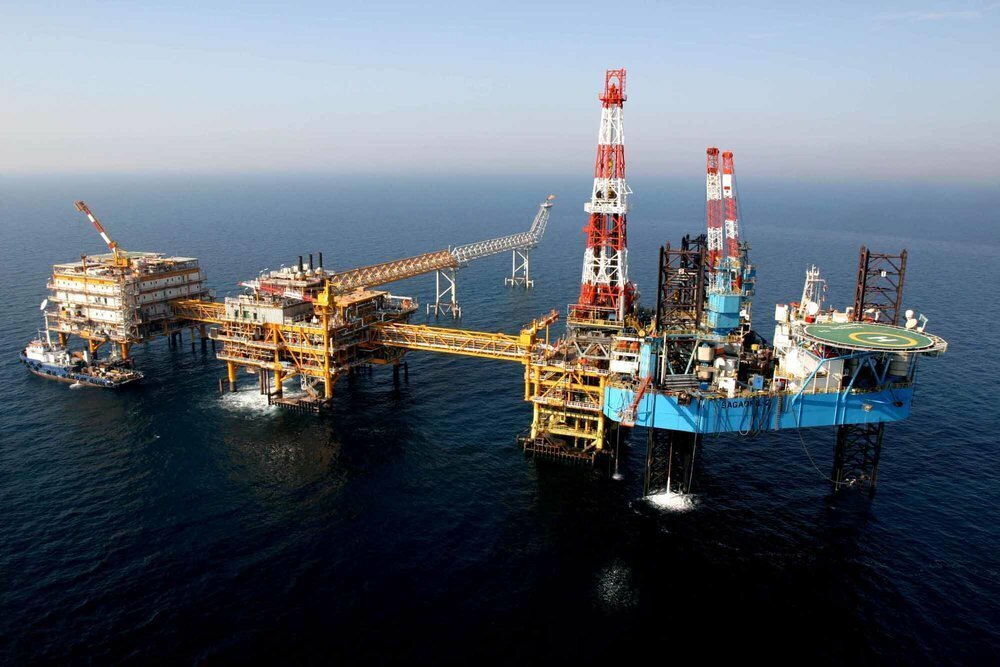Giant South Pars field secures Iran’s gas supply in winter

TEHRAN – Steady production from Iran’s giant South Pars gas field, which the country shares with Qatar in the Persian Gulf, has ensured uninterrupted and sustainable supply of natural gas across the country during the cold season.
The mentioned gas field is expanded over an area of 9,700 square kilometers, 3,700 square kilometers of which, called South Pars, are in Iran’s territorial waters. The remaining 6,000 square kilometers, called North Dome, are situated in Qatar’s territorial waters.
The field, currently divided into 24 standard phases on the Iranian side, is estimated to contain a significant amount of natural gas, accounting for about eight percent of the world’s reserves, and approximately 18 billion barrels of condensate.
Currently, 14 gas refineries in southern Iran are processing the natural gas extracted from the giant South Pars gas field.
The implementation of new phases in this field in the current Iranian calendar year (started on March 20, 2020) has further increased the production from this reservoir, cementing the role of this field in supplying the country’s natural gas needs.
Iran is currently producing over 810 million cubic meters (mcm) of natural gas daily which is mostly used inside the country for the domestic sector and also as fuel for the power plants and a small portion is also exported to neighboring countries like Iraq.
Speaking to IRNA on Saturday, the managing director of the 8th South Pars Refinery said that the increase in the giant gas field’s output from phases 20 and 21, which have gone fully operational in the current year, is going to ensure a steady supply of gas in the cold season.
“Phases 20 and 21 have produced 13.14 billion cubic meters of gas in the first seven months of this [Iranian calendar] year (March 20-October 21, 2020),”, Hadi Chabok said, adding: “This refinery has produced about 11.672 billion cubic meters of sweet gas during this period.”
The 8th South Pars Refinery receives the gas produced in phases 20 and 21 through pipeline.
He pointed to the suitable operating conditions in the mentioned refinery and said: “The reliability of this refinery was 54.99 units this year, which is an excellent level.”
According to Chabok, phases 20 and 21 have fulfilled 100 percent of their production commitments and the production from these phases increased by two percent in the first seven months of this year.
Each of the phases 20 and 21 now produce 52 million cubic meters of gas, 75,000 barrels of gas condensate, and 400 tons of sulfur daily. One million tons of liquefied natural gas and one million tons of ethane are also produced annually.
Back in November 2020, Kambiz Sefati, the operator of the 8th South Pars Refinery, had said that the refinery recorded the best performance in production and safety among all the refineries of the South Pars complex.
"Engineers and employees of this refinery were able to take a big step toward the realization of the “surge in production” motto by the production of 10.66 billion cubic meters of gas since the beginning of the current [Iranian calendar] year (March 20, 2020) and 77,760 man-hours of work without accidents.”
Last year, the 8th refinery had also announced that the amount of associated petroleum gas flaring in this refinery was reduced nearly to zero.
All the offshore operations of the development project of the South Pars gas field, except for phase 11, were completed in the past Iranian calendar year (ended on March 19, 2020) and the development of Phase 11 is currently underway by an Iranian company.
EF/MA
Leave a Comment